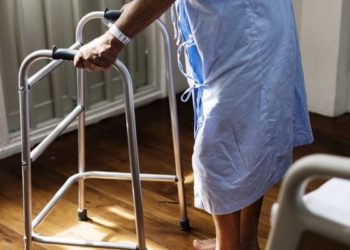Using sit-to-stand motion to assess frailty in older adults with cardiometabolic disease
1. In this cross-sectional, longitudinal study, power and speed scores measured during the sit-to-stand motion were predictive of frailty in older adults with cardiometabolic disease.
Evidence Rating Level: 2 (Good)
Frailty, characterized by decreased physiologic reserve, increased vulnerability to stressors, and a high risk for adverse health outcomes, is an important concept linked to life expectancy and well-being in older adults. With the largest proportion of the population entering older adulthood in the coming years (≥ 65), it is crucial that we focus on the prevention and early detection of frailty. This is especially important in those struggling with metabolic and cardiovascular diseases (hypertension, diabetes mellitus, dyslipidemia, atrial fibrillation, ischemic heart disease, heart failure). The ground reaction force (GRF) during sit-to-stand movements is measured using a motor function analyzer and calculates for power (maximum GFR/body weight), speed (rate of force development), and balance (lateral load sway). In this cross-sectional, longitudinal study, researchers sought to examine associations between measurements of GRF and scores for frailty in this subpopulation. The study analysis included 319 outpatients aged 65 or older with cardiometabolic diseases who were screened for frailty using the modified Cardiovascular Health Study (mCHS) scale and Kihon Checklist (KCL). Analyses demonstrated that scores for power and speed with GRF were predictive of frailty using the mCHS criteria and KCL criteria at baseline. An increase in power, speed, and total GRF scores decreased the incidence of KCL-defined frailty by 44%, 23%, and 35%, respectively (ps < .05). Similarly, mCHS and KCL defined frailty-free survival was significantly lower in patients with lower power and speed scores (p < .01 and p = .028, respectively). In fact, a 0.1-point increase in power or 1-point increase in speed reduced mCHS-defined frailty risk by 55% and 28%, respectively. The balance score was not associated with either criteria’s definition of frailty. Overall, the results of this study demonstrate that GRF may be a convenient and useful tool in determining frailty risk in resource-scarce or clinical settings.
Click to read the study in BMC Geriatrics
Image: PD
©2023 2 Minute Medicine, Inc. All rights reserved. No works may be reproduced without expressed written consent from 2 Minute Medicine, Inc. Inquire about licensing here. No article should be construed as medical advice and is not intended as such by the authors or by 2 Minute Medicine, Inc.







